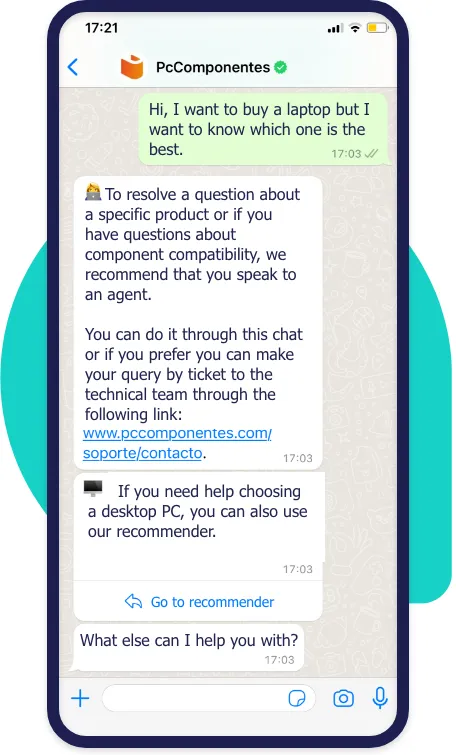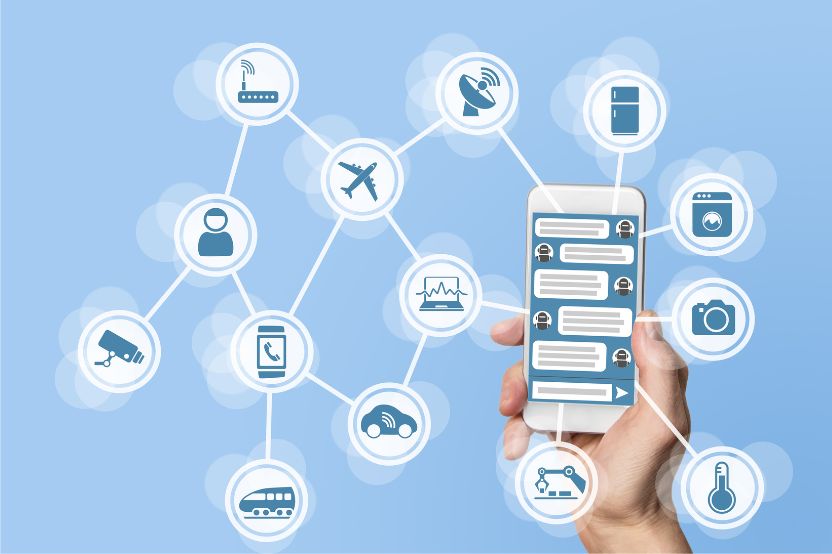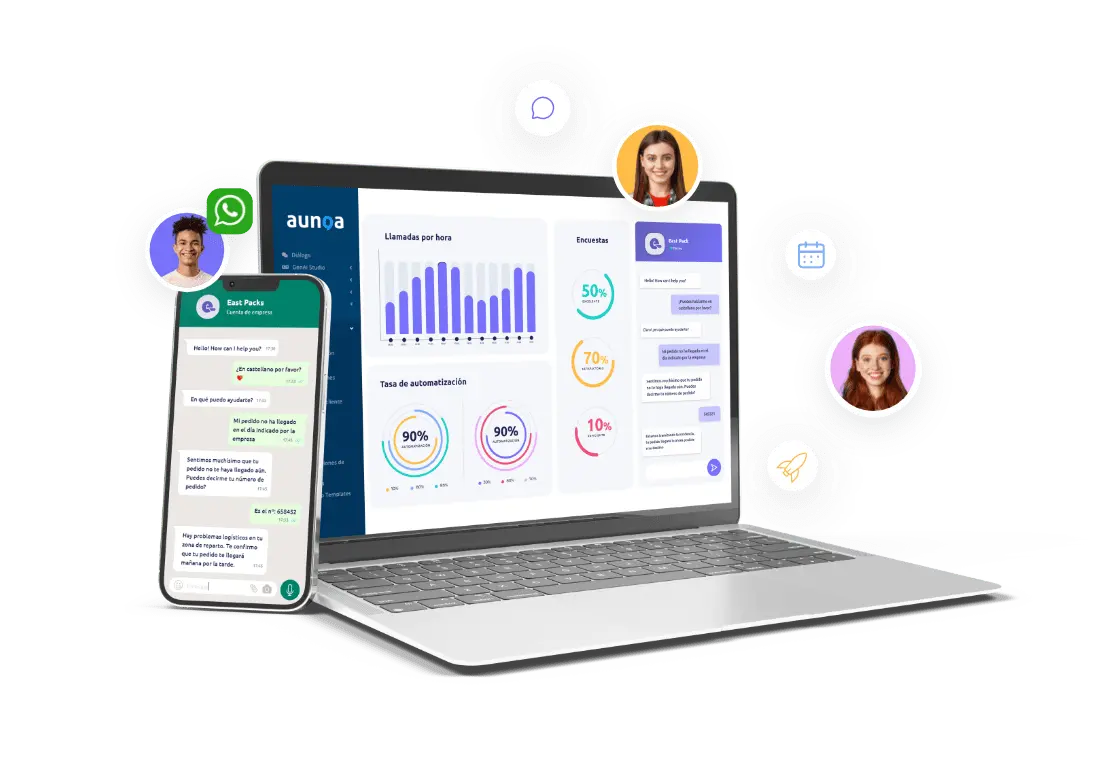Non-AI chatbots perform more limited functions, whereas AI chatbots enable scaling of Customer Service.
We have compared the features of AI chatbots versus basic chatbots to help you easily identify the differences between these conversational tools and choose the most suitable one for your business.
Chatbots have become invaluable tools for thousands of businesses, especially for Customer Service professionals looking to enhance productivity, automate processes, and optimise resources.
Artificial Intelligence (AI) enables the creation of more personalised chatbots tailored to the needs of each business and sector.
However, there are still many questions about distinguishing AI-based chatbots from basic non-AI chatbots which are preconfigured to respond to specific queries.
Below, we outline the characteristics of AI chatbots and compare them with menu-driven chatbots:
Features of AI Chatbots
AI chatbots have revolutionised the way businesses interact with their customers. Unlike traditional rule-based chatbots that can only respond to predefined questions, AI chatbots use advanced technologies such as Natural Language Processing (NLP) and machine learning to understand and respond to user queries more naturally and complexly.
AI Chatbots

- Can resolve informational queries, transactional questions, and complex tasks.
- Understand, process, and respond in the user’s language.
- Can engage in human-like and natural conversations.
- Automatically answer questions simultaneously!
- Use Natural Language Processing (NLP), speech recognition, and speech-to-text transcription (STT).
- Recognise the intent behind user statements, matching them accurately with the intended task.
- Automate processes and workflows to expedite management.
- Transfer queries to specialised agents and categorise tickets.
- Offer dynamic, conversational interactions to enhance message personalisation.
- Can process shared user data and transfer it to CRMs or databases.
- Improve performance through machine learning and human-supervised learning.
Features of Non-AI Chatbots
Non-AI chatbots, also known as rule-based chatbots, guided chatbots, or deterministic chatbots, simulate a conversation with users through a set of predefined rules. Unlike AI chatbots, which use advanced technologies to understand and respond to natural language, non-AI chatbots operate in a more rigid and limited manner.
Rule-Based Chatbots
- Perform limited, predefined tasks.
- Only resolve pre-configured questions.
- Engage in scripted conversations.
- Only respond to automated queries.
- Lack natural language processing capabilities.
- Do not recognise message intent as they cannot understand natural language.
- Cannot transfer queries to an agent but can trigger notifications.
- Provide simple, non-interactive, and non-conversational interactions.
- Cannot capture, process, or transfer data to other tools.
- Cannot be trained to improve performance progressively.

Comparison of AI Chatbots vs. Guided Chatbots
After examining the characteristics of AI chatbots and rule-based chatbots, we can summarise that, unlike non-AI chatbots, AI chatbots can automate queries and processes through a conversational experience with users.
| Feature | AI Chatbots | Basic Chatbots |
|---|---|---|
| Understanding Natural Language | Highly advanced. Can understand the context of the conversation, user intent, and respond naturally and fluidly. | Limited. Can only understand predefined phrases and respond with preprogrammed options. |
| Learning and Adaptation | Learn from user interactions and improve performance over time. Adapt to different communication styles and preferences. | Do not learn or adapt. Behaviour remains the same regardless of the user. |
| Response Generation | Can generate creative and personalised responses for each user. Can even create new content like poems or stories. | Can only respond with predefined options or programmed phrases. |
| Tasks and Applications | Can perform complex tasks such as scheduling appointments, answering technical questions, or providing customer support. | Can only perform simple tasks like answering basic questions or providing predefined information. |
| Scalability | Can be scaled to handle a large volume of user interactions. | Limited scalability, can become overwhelmed with a high number of users. |
| Development and Maintenance Cost | Development and maintenance can be more expensive due to the complexity of the technology. | Development and maintenance are usually less costly. |
How to determine if your business needs an AI Chatbot
Many Customer Service centres are limited and ineffective in responding quickly to user demands. Speed is a critical factor in the quality of Customer Service. A Zendesk report revealed that 89% of users say a quick response is important when choosing a brand.
As companies grow, the volume of queries increases, and they often lack the resources to improve response times. This leads to queues and increased customer frustration.
This issue is common across different channels. For example, in telephone queries, wait times are accompanied by repetitive hold music, and contact forms rarely provide immediate responses. At best, customers receive an email confirming their ticket has been opened.
This limitation negatively impacts customer service management, customer satisfaction, and user experience.
Hiring more agents doesn’t solve this problem, as call volumes can fluctuate. However, Conversational AI solutions, such as AI chatbots, can help Call Centres and Customer Service agents reduce or eliminate these wait times.
Benefits of using AI Chatbots
- Highly recommended for businesses with high data volumes, traffic, and users.
- Enable scaling of omnichannel and self-service.
- Save significant time and resources in the long term.
- Learn from collected information.
- Continuously improve as they are trained.
- Understand behavioural patterns.
- Can identify different languages.
- Offer personalised interactions at scale.
- Streamline processes and workflows through automation.
- Easily integrate with other software and Customer Service channels.
Benefits of using basic Non-AI Chatbots
Before diving into the advantages of basic chatbots, it’s important to highlight how they can enhance customer experience despite limited automation capabilities. These chatbots can be as dynamic as programmed, are quick to set up, and easily integrate with other interfaces.
Basic Chatbots:
- Improve customer experience despite limited automation.
- Can be dynamically programmed.
- Quick to set up.
- Easily integrate with other interfaces.
- Facilitate communication between an agent and a human.
- Are safe and predictable.
- Can include interactive elements for initial message personalisation.
In summary, both AI chatbots and basic chatbots offer unique benefits, and the choice depends on the specific characteristics and needs of your business.






